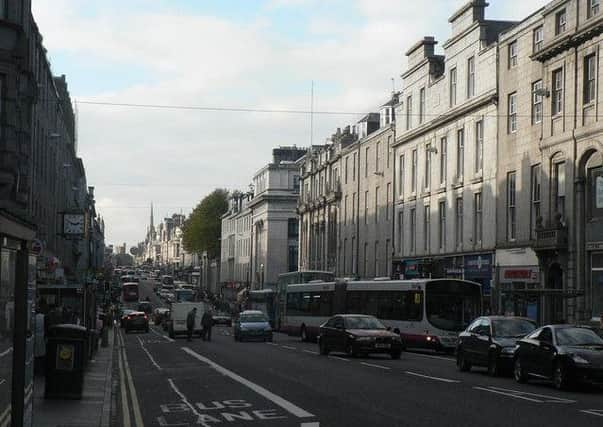Second air pollution episode this year strikes Scotland


Today (Wednesday, February 15) levels of toxic Particulate Matter are breaking World Health Organisation and Scottish regulatory safety standards across much of the Central Belt and the North East of Scotland.
Unsafe levels of Particulate Matter are currently being recorded on official monitors in: Aberdeen, Angus, Dundee, East Ayrshire, East Dunbartonshire, Edinburgh, Falkirk, Fife, Glasgow, North Ayrshire, Renfrewshire, Perth, South Lanarkshire, Stirling, West Dunbartonshire, and West Lothian. The levels are especially high in Edinburgh and Falkirk.
Advertisement
Hide AdAdvertisement
Hide AdEmilia Hanna, Air Pollution Campaigner for Friends of the Earth Scotland said: “This is the second high pollution episode in the space of a month in Scotland, because it was not predicted by the Government’s official forecasting service, it has taken the country by surprise.
“Toxic Particulate Matter has climbed to unsafe levels due to pollution blowing in from the south east combining with the fumes pouring out of car and lorry exhausts on the streets here in Scotland. The current hazy and still weather conditions have stopped the pollution from dispersing. Fortunately, as the winds are set to pick up again from the south west tomorrow, the pollution episode should start to clear.
“The air pollution episode is creating dangerous conditions, especially for vulnerable people with lung or heart problems.”
The health advice that accompanies the levels of pollution being experienced in Aberdeen, Angus, Dundee, East Ayrshire, East Dunbartonshire, Fife, Glasgow, North Ayrshire, Renfrewshire, Perth, South Lanarkshire, Stirling, West Dunbartonshire, and West Lothian is as follows, said Hanna:
Advertisement
Hide AdAdvertisement
Hide Ad“The official health advice that accompanies the levels currently being experienced in these Councils is that adults and children with lung problems, and adults with heart problems, who experience symptoms, should consider reducing strenuous physical activity, particularly outdoors.
The health advice that accompanies the higher levels of pollution being experienced in Edinburgh and Falkirk is as follows, said Hanna:
“The official health advice that accompanies the levels currently being experienced in Edinburgh and Falkirk is that people with lung and heart problems, and older people, should avoid strenuous physical activity. People who are otherwise healthy and don’t usually notice pollution are also advised to reduce physical exertion, particularly outdoors, especially if they experience symptoms such as coughs or a sore throat.
“The levels being recorded by monitors today are in breach of World Health Organisation and Scottish safety standards, which were due to have been achieved over a decade ago.”
Advertisement
Hide AdAdvertisement
Hide AdTraffic-derived air pollution, mainly composed of fine particles and toxic gases, causes thousands of early deaths in Scotland each year and is second only to smoking in terms of its mortality impacts. It has been linked with cancer, allergies, asthma, strokes, heart attacks, restricted foetal development, damaged lung development in children, and more recently, the onset of dementia in adults.
Hanna continued:
“These toxic levels of pollution are damaging our health in a shocking variety of ways and the Scottish Government was legally obliged to ensure clean air by 2010. Traffic is a key culprit of today’s pollution, so the Government needs to get serious about making it easier for us to walk, cycle, and use public transport.
“We welcome news that the European Commission has today issued a final warning against the UK Government for their failure tackle our air pollution crisis. The Scottish Government is ultimately responsible for making our air safe to breathe in Scotland. Ministers have promised a Low Emission Zone by 2018, and local politicians are beginning to show willing for a zone, but the Government needs to make a public commitment that it will provide funding for these zones.